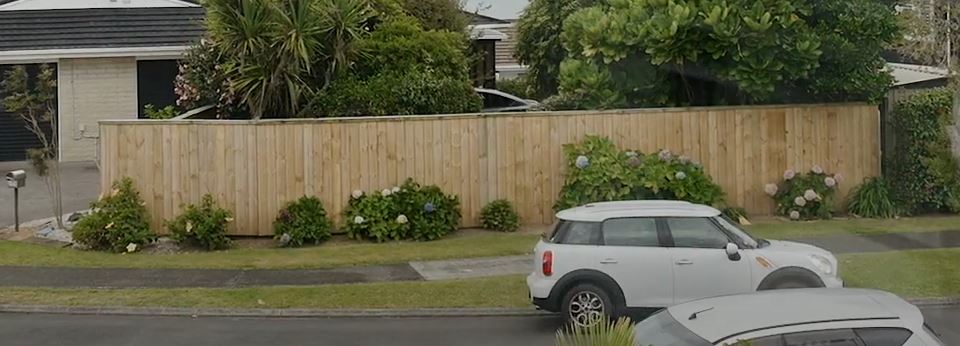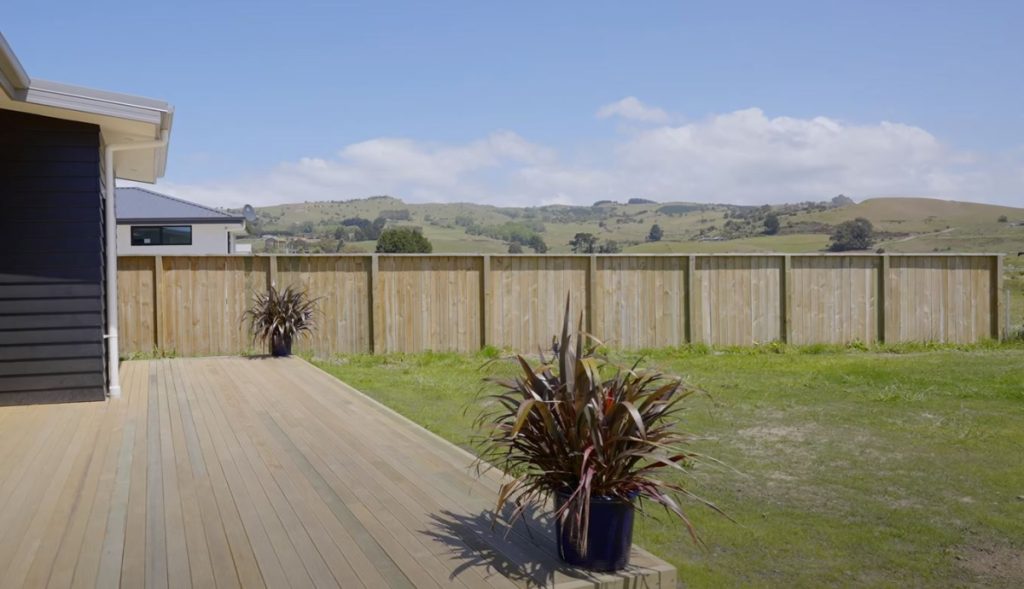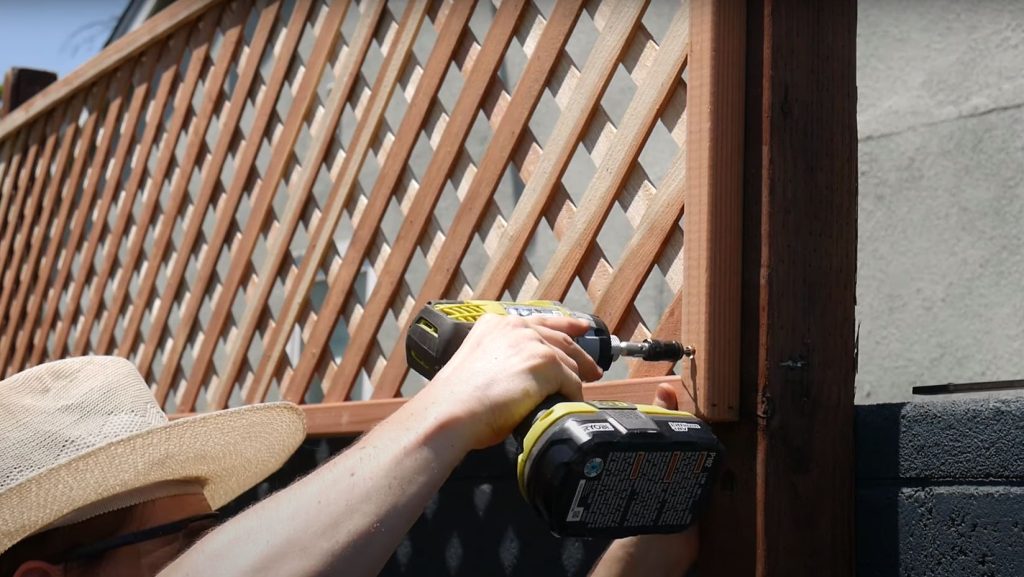Building a fence might seem like a straightforward endeavour, but there are certain pitfalls that even seasoned Hamiltonians can fall into. Whether you’re living near the bustling Dinsdale area or the more laid-back vibes of Chartwell, it’s crucial to avoid common mistakes when erecting a fence.
Avoid Using Unsuitable Materials
When it comes to fencing, the choice of material plays a pivotal role, especially considering the diverse Waikato weather. Hamiltonians understand the importance of a robust, weather-resistant fence, whether you reside in Dinsdale’s heart or Chartwell’s serene locales. Here’s a deeper dive into the intricacies of picking the right materials for your fencing project.
Timber: Nature’s Classic Choice
- Pros:
- Aesthetic Appeal: Wood offers a natural and warm aesthetic that can elevate the overall look of a property.
- Versatility: From pine to cedar, there’s a broad range of options when it comes to finishes, textures, and colours.
- Eco-friendly: Many types of timber are sustainable, especially when sourced from certified forests.
- Cons:
- Varied Durability: While some hardwoods can last decades, softwoods might need replacement or repair sooner.
- Maintenance: Timber can be prone to rot, pests, and mould, especially in areas with high humidity like Te Rapa. Regular sealing and treatment can be required.
- Cost: Premium hardwoods, though durable, can be more costly than other materials.
Metal: The Modern Powerhouse
- Pros:
- Durability: Most metals, especially aluminium and galvanised steel, offer resistance against rust and corrosion.
- Low Maintenance: Unlike wood, metals don’t need frequent treatments or paint jobs.
- Design Variability: Modern metal fences come in various designs, from sleek horizontal lines to intricate patterns.
- Cons:
- Heat Conduction: In sun-drenched areas, metal fences can get quite hot, posing a potential burn risk.
- Price Fluctuations: The cost of metals can vary based on global market trends.
- Less Natural Appeal: While they can be stylish, metal fences lack the organic feel of wooden ones.
Synthetic Options: PVC and Composite Fencing
- Pros:
- Low Maintenance: These materials resist rot, pests, and don’t require painting.
- Varied Designs: They can mimic the look of wood or have unique, modern designs.
- Durability: Often resistant to UV rays and moisture, making them suitable for the Waikato climate.
- Cons:
- Environmental Concerns: PVC, in particular, isn’t biodegradable and can be less eco-friendly.
- Potential Brittleness: Over time, some synthetic materials might become less flexible, leading to cracks or breaks.
Given the variations in climate and aesthetic preferences in Waikato, no one-size-fits-all solution exists. Understanding the pros and cons of each material allows Hamiltonians to make informed decisions, ensuring their fence stands strong and looks impeccable for years to come.
Ignoring Property Lines
One of the most common mistakes is not correctly determining property boundaries. This oversight can lead to disputes with neighbours and potential legal issues. Always ensure you consult with local land records or invest in a professional land survey before starting.
Skipping the Permit Process
In many Hamilton suburbs, you’ll need a permit before you start building, especially for fences over a certain height. Always check with local councils, as skipping this step might result in having to pull down your newly erected fence.
Overlooking Health and Safety
Fencing projects, although seemingly simple, come with their share of risks:
- Digging Dangers: Hitting underground utilities can lead to outages or even dangerous situations, especially if a gas line is punctured.
- Material Handling: Carrying heavy posts and panels can strain the back if not handled properly. Always bend your knees and maintain good posture.
- Tool Safety: Equipment like power saws or post hole diggers can cause injuries if not used correctly. Ensure you wear safety gear, including gloves, safety glasses, and ear protection.
Not Preparing for Varied Terrains
Hamilton’s diverse terrain, from the flatlands of Glenview to the hilly areas of Flagstaff, can pose challenges. Fences on sloping lands might require stepped or raked designs, and the post depth may need adjustments based on soil type.
Overlooking Maintenance Considerations
While a fence might look perfect when first erected, it’ll require regular maintenance. Consider factors like:
- Weather Resistance: Ensure materials and paints or stains are weatherproof, especially for the unpredictable Waikato climate.
- Pest Protection: Some timbers might be susceptible to termites or other pests. Consider treatments or choose pest-resistant varieties.
Costly Assumptions and Oversights: Waikato’s Fencing Pitfalls
While there’s a great sense of achievement in building your own fence, especially for the proud residents of Waikato, it’s essential to navigate the potential pitfalls. In the heart of Hamilton, from Glenview to Huntington, homeowners have seen the repercussions of assumptions and oversights when it comes to fencing. Let’s explore some of the common costly mistakes made and how you can avoid them in your next fencing project.
Not Checking Local Regulations:
- The Oversight: Many homeowners assume that they can build any fence they like on their property. However, each suburb, whether it’s Claudelands or Dindsale, might have its own set of fencing regulations.
- The Consequence: Building a non-compliant fence can lead to hefty fines and the added cost of reconstructing the fence.
- The Solution: Always check with the local council or neighbourhood association before starting your fencing project.
Skipping the Survey:
- The Oversight: It’s tempting to rely on assumptions when determining your property’s boundaries.
- The Consequence: Encroaching on a neighbour’s property can not only sour relationships but may also mean tearing down a newly built fence and starting afresh.
- The Solution: Invest in a professional property survey to ensure you’re building within your property lines.
Underestimating Materials and Costs:
- The Oversight: Many Hamiltonians start their fencing projects based on rough estimates, thinking they’ll save on costs.
- The Consequence: This can lead to running out of materials mid-project, causing delays, and potentially higher costs if more supplies need to be urgently purchased.
- The Solution: Take detailed measurements and consult with local suppliers, ensuring you have a buffer of extra materials just in case.
Improper Post Installation:
- The Oversight: Assuming that digging a hole and setting a post in it is enough.
- The Consequence: Posts that aren’t set deeply enough or without proper support can cause the entire fence to be unstable, especially in the winds coming off the Waikato River.
- The Solution: Ensure that posts are set at the right depth, using gravel for drainage and concrete for stability.
Neglecting Maintenance Plans:
- The Oversight: Believing that once a fence is up, it’s done for good.
- The Consequence: Without regular maintenance, even the sturdiest of fences can deteriorate rapidly. This can result in higher costs down the line for repairs or replacements.
- The Solution: Depending on your fence material, set up a maintenance plan. This might include regular staining for wooden fences or checks for rust in metal ones.
A Word on Choosing the Right Fencing Partner
While these pointers aim to guide Hamiltonians on the dos and don’ts of fencing, partnering with a seasoned player like Quality Fencing Hamilton ensures that your fencing project goes off without a hitch. With expertise tailored to the Waikato region’s unique requirements, they’re the go-to for a hassle-free fencing experience.
With the right approach, informed choices, and fence installation professionals help, your fencing project can enhance your property’s aesthetic and functionality, making it a proud feature of your Hamilton home.
Frequently Asked Questions: Common Fencing Mistakes
What happens if I don’t check property boundaries before erecting my fence?
Not checking property boundaries accurately is a costly oversight. Building on a neighbour’s land can lead to disputes, legal challenges, and the potential need to relocate or dismantle your fence. Always get an accurate property survey before starting.
How deep should I set my fence posts for stability?
The depth will depend on the fence’s height and specific soil type. A general rule is to set one-third of the fence post underground. However, considering the varied terrain, consulting with local experts or fencing professionals is advisable.
Does using different materials for fencing affect its longevity?
Absolutely. Some materials, like untreated wood, can be more susceptible to rot, pests, and weather damage. Always choose materials that are appropriate for the climate and intended purpose of the fence.
What’s the risk of not considering the local climate when choosing fence materials?
Not accounting for local climate can lead to premature wear, damage, or the need for increased maintenance. For instance, metal fences in damp climates might be more susceptible to rust if not treated or coated properly.
Are there eco-friendly fencing materials that I should consider?
Yes, several eco-friendly fencing options are available, including bamboo, recycled plastic, and sustainably-sourced timber. However, always ensure these materials are suitable for your specific needs and the local environment.
I want to DIY my fence. What’s the most common mistake to avoid?
One of the frequent pitfalls of DIY fencing is not adequately planning and assessing the site. This includes checking for underground utilities, understanding soil types, and ensuring proper drainage. Without this, you risk damaging utilities or setting up a fence that may not stand the test of time.
Can I deviate from local fencing regulations if I have a valid reason?
While you might have genuine reasons, local regulations are in place for various reasons, including safety, aesthetics, and property value considerations. Deviating without appropriate permissions can lead to fines or the need to modify or dismantle your fence.
How often should I inspect my fence for maintenance needs?
Regular inspections, at least twice a year, are recommended. After extreme weather conditions or events, a prompt check is also wise. Regular maintenance checks can help spot potential problems early and prolong the life of your fence.




